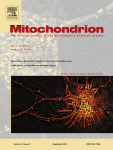 After Tina Wenz was found guilty of scientific misconduct, how long did it take for journals to retract the problematic papers? The answer: Between three and nine months.
After Tina Wenz was found guilty of scientific misconduct, how long did it take for journals to retract the problematic papers? The answer: Between three and nine months.
In September 2016, the University of Cologne found that Wenz had committed scientific misconduct in six papers and requested they all be retracted. From that point on, the retraction clock was ticking.
We’ve explored how long it takes a journal to act over the years, and we’ve found that the time between identifying a problem to retracting the paper can vary — and sometimes last years.
In Wenz’s case, one of the papers—published in Cell Metabolism in 2009—had already been retracted in 2015. Three of the remaining five were retracted in December 2016—a 2008 paper in Cell Metabolism, a 2009 paper in Proceedings of the National Academy of Sciences (PNAS), and a 2009 paper in the Journal of Applied Physiology.
In January 2017, the journal IUBMB Life pulled a 2014 paper flagged in the investigation. And just over nine months after Wenz was found guilty of misconduct, the last paper—published in 2013 in Mitochondrion—has been retracted.
The most recent notice states that the University of Cologne requested the retractions, after determining that the data had been “inappropriately manipulated.”
Here’s the retraction notice in Mitochondrion:
This retraction was suggested by the University of Cologne Investigation committee and seconded by the authors who the journal was able to contact (Wenz, T., Dillon, L., Diaz, F., Hida, A., and Moraes, C.T.). Following an investigation of the last author, Dr. Tina Wenz, by the University of Cologne, Germany, the university determined that data presented in this article have been inappropriately manipulated. Specifically, western blot images in Figure 5F (tubulin in cortex), 2F (COXI in hippocampus) and 3B (Sod2 in hippocampus) were re-used from an earlier article published elsewhere [Increased muscle PGC-1alpha expression protects from sarcopenia and metabolic disease during aging”” Wenz T, Rossi SG, Rotundo RL, Spiegelman BM, and Moraes CT. Proc Natl Acad Sci U S A. 2009;106:20405-10, doi: 10.1073/pnas.0911570106] representing different experimental findings. Therefore, whether or not the main conclusions are still valid, the authors request retraction of this publication because the scientific integrity of the study was compromised.
“Bezafibrate improves mitochondrial function in the CNS of a mouse model of mitochondrial encephalopathy,” which first appeared online in December 2012, has been cited 21 times, according to Clarivate Analytics’ Web of Science. In a post from October 2015, we reported that one of Wenz’s co-authors, Carlos Moraes, had contacted the journal to request a retraction of the paper.
The second retraction notice, which was published online in January 2017 and will appear in the July 2017 print issue. It includes a note from the corresponding author, Wenz:
The above article, published online on November 15, 2014 in Wiley Online Library (wileyonlinelibrary.com), has been retracted by agreement between the journal’s Editors-in-Chief, Angelo Azzi and William J. Whelan, Corresponding Author Tina Wenz, the University of Cologne, and Wiley Periodicals, Inc. The article has been retracted on request of the University of Cologne that, after an investigation, established that the data reported in it are not reproducible.
Note from the Corresponding Author: “The paper reports on the influence of mitochondrial acetylation on protein synthesis. After publication, several irregularities appeared and have been thoroughly investigated by the lab of the Corresponding Author in cooperation with the commission of Research integrity of the University of Cologne. Both came to the conclusion that data used for the publication are erroneous and that the presented data are not reproducible by the lab of the Corresponding Author and other labs. The Corresponding Author takes responsibility and regrets not having detected these issues before publication. The appropriate corrective action is retraction of the paper. The Corresponding Author apologizes to the scientific community.”
“Mitochondrial protein acetylation mediates nutrient sensing of mitochondrial protein synthesis and mitonuclear protein balance” has not yet been cited.
Wenz now works at pharmaceutical company Boehringer Ingelheim.
Retractions take time — and some more than others. After the University of Maryland asked 11 journals to take action on 26 papers by cancer researcher Anil Jaiswal, some acted relatively quickly—issuing retractions or corrections within four to six months—while others have not taken any action yet. In the case of Eric Poehlman, an obesity researcher, it took one journal 12 years to retract a paper after Poehlman was found guilty of misconduct in 2005.
Like Retraction Watch? Consider making a tax-deductible contribution to support our growth. You can also follow us on Twitter, like us on Facebook, add us to your RSS reader, sign up on our homepage for an email every time there’s a new post, or subscribe to our new daily digest. Click here to review our Comments Policy. For a sneak peek at what we’re working on, click here.
There’s a direct correlation between how much buzz the misconduct has generated either on PubPeer, RW, social media or the popular press.
It’s a complex equation however. If the paper is from a too-big-to-fail researcher or if the Institution stonewalls correcting the literature via retraction is a painfully slow process.
Journals ostensibly the gatekeepers also lack incentive to correct and usuall won’t until some light is shed in a public forum.
My institution requests correction or retraction as soon as an investigation is completed. We have found that some journals ignore these requests for several years. In one case I was told by the managing editor that there is increasing concern amongst publishers, especially when the authors are Yanks, that they will face legal action when they retract, and this has a chilling effect. This is apparently true even when misconduct is absolutely evident.
What are causes of paper retraction? and how long time for a paper to be retracted ?